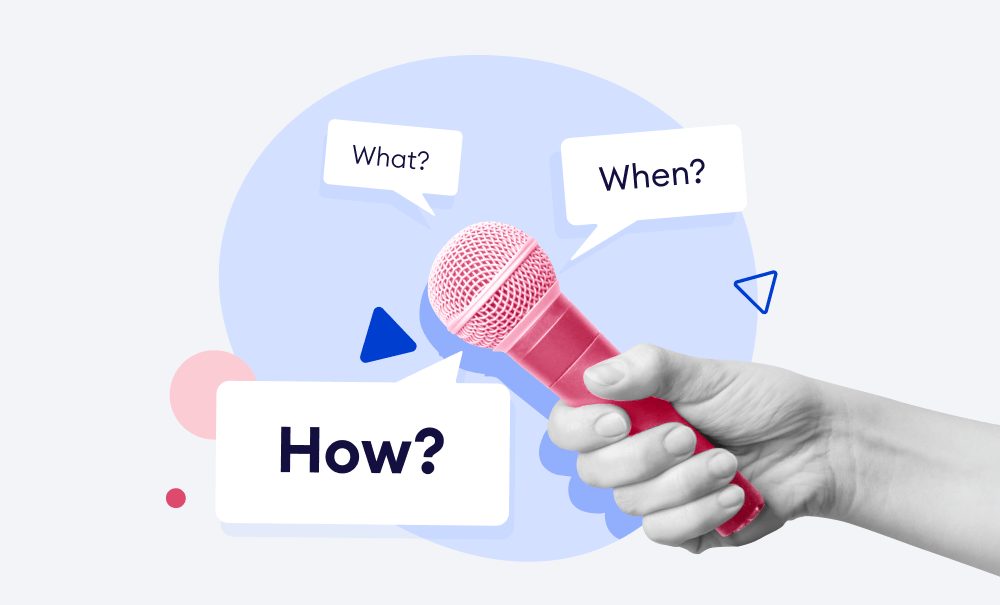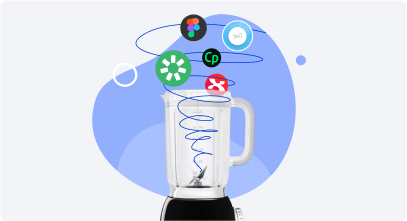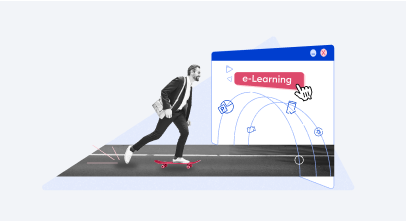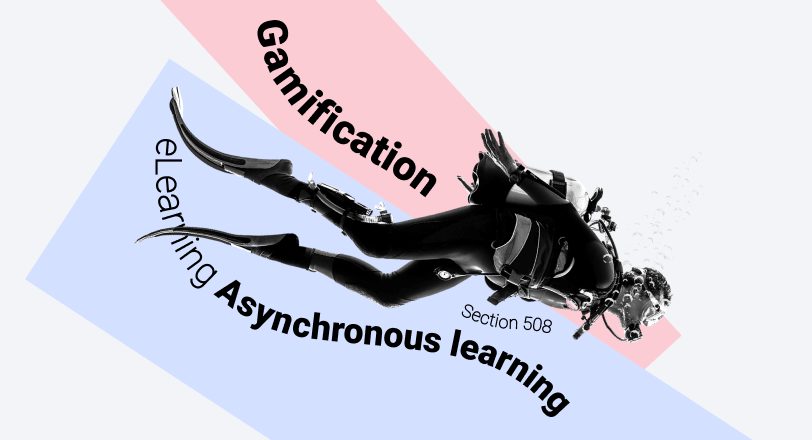11 Instructional Designer Interview Questions and How to Answer Them

It’s an exciting time to be an instructional designer! There are so many opportunities to help organizations, schools, and entire industries build better learning, especially digital learning experiences. And there have never been more interesting technologies, templates, and media to use in instructional design plans and development. If you’re looking for your next great role, getting a solid understanding of the types of instructional designer interview questions you will be asked is a must in acing your interview and landing that next job.
There are some things you’ll need to prepare in order to get the opportunity to land an instructional design role. Here, we’ll cover the entire process, but will focus on the questions and answers that instructional designers experience during the interview.
Watch the video or continue reading the article.
Preparing for the Interview
Of course, every interview requires preparation, just as you had prepared your resume by tailoring it to fit the job posting advertisement. To prepare for the interview, you should know the organization you will be interviewing for, the people you’ll meet in the interview, and the people you will be working with in your new (hopefully!) role. It’s a really good idea to check out sites like LinkedIn and professional groups (ATD, Learning Guild, and others) to learn more about the organization and the people you might interact with.
Additionally, you should prepare a portfolio of work examples to demonstrate your capabilities as an instructional designer. Be clear within your own work history about what demonstrates the role you played and what your team members did in the projects you select to showcase your talents. If your work is protected by an NDA, consider taking a screenshot that is indicative of the project and writing a synopsis of what it was, how you did it, how long it took, and who was involved. Be prepared to show your work in the interview, even if it’s just screenshots and discussion.
Next, prepare for some questions you may encounter. Questions usually get presented by the hiring manager (the learning manager who likely knows about learning and instructional design), but depending on the organization, questions may also be presented by the HR business partner or creative director. You should be aware of the needs of each and think about their underlying assumptions and reasons for asking you questions.
HR Business Questions
Usually, the HR talent advisor in the room will be looking for an overall good fit to the culture of the organization or the team to which you will be reporting. They will also be looking for your ability to respond in a positive and constructive manner, the completeness of your questions, and the way in which you interact with the others in the room. They are not specialists in your area, so their job is to determine if you will fit in with the work group. Here are some questions an HR representative might ask.
1. Tell me what you know about the organization and the role
This is to determine if you prepared for the interview and how difficult it will be to orient you to the organization, if you already know people or have done work or interacted with the organization, and whether you can understand the role being presented or not.
How do you answer?
Be honest. If you have done your homework, then you’ve been to their site and explored their key business proposition and customer base. If you have worked with or interacted with people in the company before, say so, but make sure you are positive in your language. Even if your interaction wasn’t so positive, you don’t know the relationship of that person to the people in the room, so keep it light and don’t lie or speak in vagaries.
2. Tell us briefly about your career and the reason you wish to join our company
Human Resources is looking for red flags in your resume history and are any gaps between what you say on paper and how you represent it in person. They are also looking at your body language when talking about your roles, your contribution, and your reasons for wanting to join.
How do you answer?
Be concise, positive, and genuine. You can cover experiences in a sentence or two. If the role or a particular project would be of interest in the position you are interviewing for, explain that a bit more. Don’t talk about parts of the projects that you worked on if you didn’t do the work yourself. It’s important to be very clear to the hiring manager about what you did for a customer or on a project, so they are clear about your capabilities. Being untruthful or stretching your experience will be noticed at some point, so be your genuine self!
If you are leaving the company you work for now because they are not suited to you, then be brief and simple, but honest. You can say something like, “I am looking forward to growing my skills in [X]”, or “there may be a better use for my skills here because I am excited to [what do you think you can contribute]”.
3. You have experience in this business/industry but less experience in the instructional design role. Tell us how you made the transition to being an instructional designer?
The talent advisor asking this question has to make sure that the actual job of the instructional designer can be performed effectively and completely, so experience counts both with reference to knowing the business and knowing the job.
How do you answer?
If you are moving from a facilitation, coordination, or teaching role, you have experience with classrooms or other educational settings, so focus on that. If you are coming to instructional design from the role of subject matter expert, human resources, project management, graphic design or other related professions, make sure you’re comfortable with the principles and the ‘science’ of adult education and instructional design.
If you need to refresh your memory, check out this article on Instructional Design. If more than 40% of this article is new to you, it would be a good idea to learn more about instructional design before you apply for ID jobs.
Learning and Design Manager Questions
The hiring manager is going to ask you some pretty specific questions about the role of an instructional designer and your experience with the various tasks asked of one. From the job posting, you should be able to determine whether this is a consultative, design, development, technical, or coordination role. Be sure to be truthful about your experiences, but don’t discount your abilities with elements that may not be specifically related to instructional design tasks. Usually the learning and design manager is familiar with instructional design and the technical nature of what instructional designers do, but this isn’t always the case. Be sure not to use too much jargon and keep your answers focused on solving problems.
4. What process do you use or follow in performing instructional design?
The hiring manager wants to know if you know the key words and actually use them — if, for example, you follow the ADDIE process, or if you follow the principles of other processes such as agile and waterfall. Good designers are naturally organized, but following a known process helps the whole team function better.
How do you answer?
Instructional design is only partly about the art. A lot of it speaks to the ability to work with others against tight deadlines and with multiple stakeholders. If you are new to instructional design, you should take some time to learn about basic project management, especially within the context of learning design. ADDIE is a classic process that you should mention if you know and follow these practices, but feel free to describe other processes as well.
5. How do you prefer to work with subject matter experts (SMEs)?
This question is posed to understand not only more about your process when working with others, but also your level of experience working with those in non-design roles.
How do you answer?
Think about experiences you’ve had both with SMEs who were over contributors and those who were more difficult to extract information from. You may want to make a list of examples of SMEs you’ve worked with and use those as a foundation to talk about how you work to get the information needed for the learners, based on the learners’ requirements.
6. What role does the learner play in your design?
The hiring manager wants to know if you are going to consider the three principle audiences that need the content: the learner, the sponsor, and the organization.
How do you answer?
Remember that, while the sponsor (or SME) plays a very important role in supplying the information you need to design learning experiences, it is the learner’s behavior or knowledge you are trying to affect. You should be able to describe how you determine your learner’s perspective and provide examples of how you acted on behalf of the learner with respect to the content being developed.
Present some examples of how you helped a very eager subject matter expert understand how much information the learner really needed in order to perform the task effectively as a result of attending the training. Show an instance of where you effectively used a persona, empathy map, or some other characterization of the learners’ real environment to inform delivery or design choices (not putting audio into eLearning delivered on a factory floor where it is loud, for example). Remember to always be respectful and serious in presenting these examples; your interviewers may have once been sponsors or SMEs themselves!
7. How much experience do you have with storyboards, script writing, authoring tools, and LMSs?
This is a question to help determine your level of experience in the various roles that an instructional designer plays in the creation of learning content. As the instructional designer role is actually not really well defined, this question is asked to help the hiring manager place you in relation to what they think they are looking for in this role.
How do you answer?
If you are an instructional designer, you will know what a storyboard and a script are, if you have done eLearning or multimedia recording (animation, video, podcasts, etc.). If you are an instructional developer, you may have experience in receiving and working with these and using them to develop learning content.
Instructional designers typically have some knowledge of development and development tools, but they will not be able to create scripts, test elements, learning objectives, or outcomes, and have less experience working directly with SMEs during the beginning of a project. Which one are you?
This is critical to the ID role, because your experience will tell the hiring manager what you can do with the work you’ll be given. Be truthful about your experience and your willingness to learn more about how the organization views the role of an instructional designer. Feel free to ask the hiring manager what proportion of the work is typically allotted to client management, project coordination, design, development, LMS administration, test development, etc. This will give you a feel for what will be expected of you as a candidate for this role.
Here are a few articles you might find useful. Check them out before going to the interview:
- The 8 Best eLearning Authoring Tools: Top Picks for 2022 →
- What is an LMS, and What Can an LMS Do for Your Business? →
- eLearning Storyboard 101: How to Map Out an Online Course →
- How to Create an Online Course – A Complete Guide →
8. What kinds of learning content have you built?
In today’s learning environment, learning interventions take many forms: eLearning, classroom based instruction, virtual classrooms and webinars, video presentations, workbook based practice, podcasts, eBooks, and conferences, among many others.
How do you answer?
Here is your opportunity to demonstrate the breadth of your creativity! Have samples ready to describe the media that was chosen (classroom, book, video, animation, etc.) and why that was decided to be the most successful way to use this content type. Show your creativity. It may not be a format that is used by the interviewing company, but it will help the hiring manager determine the breadth of your experience. If you are a novice instructional designer and are joining the profession from another, consider how you’ve used materials in your other workplace to deliver training or learning to an audience.
9. Here is a sample situation/piece of content. How would you go about designing content and making sure it was delivered successfully?
The hiring manager is looking for two things: how quickly you can think, and what level of caution and creativity will you use to solve this problem.
How do you answer?
Because it is often important for an instructional designer to think on their feet when solving a problem on a deadline or working with a challenging SME, this question will probably arise. Think about the organization and its profile in the marketplace and with its customers. Your answer should be aligned with the organization’s key principles or persona. For example, if you are going to work in a retail environment, your suggestions would likely include short-burst experiences like eLearning, or scenario testing, but not long classroom courses or virtual classrooms with a lot of pre-work or post-learning testing. If the organization is a software company, you are doubtlessly going to be able to recommend microlearning, games, and contests, or other immersive digital interventions. Feel free to suggest something that is ‘outside the box’ for the organization, as long as you can demonstrate why it would be a good choice.
10. What learning theories do you think are most important in adult learning?
The hiring manager is probably looking for some confirmation that you have spent some time learning about learning and adult education. Not everyone who is an instructional designer has (or needs) formal education in instructional design, learning, pedagogy, andragogy, or applied cognitive psychology, and the hiring manager needs to know the extent of your knowledge.
How do you answer?
If you have formal education in instructional design and adult learning, you will likely have an opinion on how learners learn and which theories and bodies of research you ascribe to most readily. If not, or if you have been doing this for a while as a learning manager, facilitator, coordinator, etc., then it would be a good idea to brush up on your knowledge here. A good refresher to start with is this article on learning theories from iSpring. You should also think about the ‘fads’ that learning managers or human resources professionals who are not involved in learning latch onto as key words or ideas. You can find many of these trends or myths thoroughly discussed (and debunked in many cases) by reading the work of Will Thalheimer and the Debunkers Club.
11. How do you measure the success of your learning designs?
It’s all well and good to create a fun, engaging, and informative module, unless it doesn’t change behavior, affect skills or awareness, and positively impact the organization. You need to be thinking about how your learning experiences can be measured in real world results. The learning manager is looking for your awareness of the impact of your work on your clients’ business.
How do you answer?
You know about Kirkpatrick’s models of learning success. If not, then you can learn more from this post on training metrics, which is a good overview of learning measurement. Think about examples of how you have developed or contributed to metrics that measured and lifted an actual business success indicator. This could be a reduction of errors in a process, an increase in retention, or a modification that incorporated a global change.
Go Beyond Instructional Designer Interview Questions
Instructional designers do not have to be formally trained in the art and science of adult learning, applied cognitive psychology, or design. You do, however, need to know about this – how to effect change and how people act and interact in the workplace.
In preparing for an instructional design job interview, remember that your interviewers likely do not have a level of knowledge equivalent to yours about instructional design roles (they may know more or less), so be prepared to keep your answers simple, thoughtful, and positive.
You may find that the role they are seeking to fill is actually multiple roles that they are calling instructional design (although this is changing in the industry). Be prepared to clarify exactly what your requirements would be to be successful and to accept that some of the work you do may well be more difficult or less interesting than the tasks of your previous role. If this balances out with most of the role, then it’s a great opportunity. Good luck!








